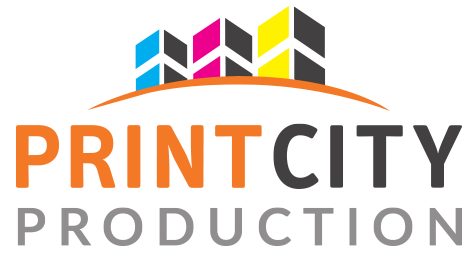Regardless of on the off chance that you need a card to say thanks, a greeting, or are just sending an update to light up a companion’s day, making your own postcard is a superb decision. On the off chance that you’ve just checked the store for postcards, odds are you didn’t discover any or they were completely embellished with neighborhood tourist spots. As much as everybody prefers to see Big Ben, it doesn’t state, “Thank you for the beautiful wedding blessing.”
Creating your own postcard and doing postcard printing can be as straightforward or mind boggling as you decide to make it. You can begin with plain, locally acquired cardstock and print a beautiful picture on the front and leave things at that. On the other hand, you can get somewhat daring and analysis with sparkle, string, decoupage, and paint
Postcards that will be sent need to meet US Postal Service guidelines for size and thickness. When all is said in done, your postcards should be imprinted on 100# cover or higher to mail. Look at our postcard mailing formats for sizes and design tips.
Thicker and bigger postcards stick out, however anything bigger than 6″ x 11″ will be require a lot higher “Pads Rate” postage.
Utilize an UV covering on the non-address side to make your card fly with reflexive components while shielding the card from taking care of and the climate.
Individuals contact a postcard so utilize Soft Touch® covering on the non-address side to give it a delicate, smooth feel (you need to demand an example – words don’t do Soft Touch® equity).
Learn much more about How to Choose the Best Paper for Your Printing Project.
Paper Recommendations:
Uncoated Cover: This splendid white smooth #1 evaluation cover stock is a significant paper, and the base thickness for a postcard going via the post office. You can undoubtedly compose on this stock and is an incredible choice for arrangement or update cards.
Dull/Matte Cover: Our dull/matte cover is a generous paper with a smooth, non-glossy covering. It is a hefty 14 pt stock appropriate for itemized, fresh printing without relinquishing the capacity to compose on the paper. You can likewise get UV covering on the facade of a dull/matte card to add fly to the side that isn’t required for composing. This is a mainstream decision for postcards.
Gloss Cover: This is one of our most mainstream papers, its polished covering makes photos and different pictures look delightful. UV covering, regularly called fluid overlay, is an extraordinary option to the 120# Gloss Cover for added pop and sparkle. Not prescribed in the event that you need to have the option to compose on the postcard.
Gloss Cover: At 24 pt, this is our thickest and sturdiest card stock. It has a lustrous, the completion that prints well. It functions admirably for bite the dust cuts and foil stepping. In case you’re adding foil stepping or bite the dust slices to your postcard, you can’t beat 200# cover stock.
Utilize a free watery covering or a discretionary UV covering to shield your postcard from scratches and scrapes while making the shadings pop.
Delicate Touch covering adds a smooth vibe to the card that makes it stick out and command notice, yet set aside some cash by just including it the non-address side.
postcard paper model
Indexes/Calendars
On paper phrasing, an inventory is whatever is saddle-sewed like a magazine, yet not at all like a magazine an index can have a scope of paper types for the cover and inside pages.
Here are a few hints for picking the best paper for an inventory:
Inventories are imprinted in 4 page increases, as each sheet is collapsed down the middle into 4 pages (front and back).
Indexes are much of the time printed with a thick cover stock and more slender content stock for the inside to limit cost. It is critical to coordinate the cover stock and inside content stock so there’s steady tone and picture quality. For instance, on the off chance that you utilize 80# gleam cover stock for the cover and 70# uncoated content stock for the inside pages, and you have a reliable brand tone on each page, it will look discernibly changed on the cover than on the inside pages.
inventory papers and ties
Inventories can be seat sewed like a magazine, loop bound, Wire-O bound, or stuck (wonderful bound) like a delicate cover book.
Think about a serious shine, covered paper for lists where workmanship and pictures are significant, and utilize an uncoated paper you can compose on for item records where perusers might need to circle something or take notes.
On the off chance that your index will be sent, be aware of the absolute weight. You may have to utilize lighter papers to limit the general mailing cost.
Learn considerably more about How to Choose the Best Paper for Your Printing Project.
Paper Recommendations:
Gloss Text. Standard reflexive paper stock, probably as thick as a quality magazine page. The glossy completion gives an incredible murky base to four shading measure printing. This can be either wonderful bound or seat sewed. Text stock, this way, is normally utilized for inside pages just except if weight is a factor in mailing cost.
Dull/Matte Text. This stock is finely covered with a non-gleam finish. It gives a great murky base to simple to peruse, fresh typography.
UV Coating, frequently called fluid overlay, is an exceptionally defensive, super gleaming sparkle covering that we apply over watery covering and afterward fix on an extraordinary machine utilizing bright light. The dissolvable free UV covering gives an amazingly hard completion to your postcard printing that is substance and scraped area safe. It makes tone and subtleties truly pop! On profound tones, it brings about a staggering, practically wet appearance. Amazing when you need a strong, ecologically amicable piece with a more extravagant, very good quality look and feel.
